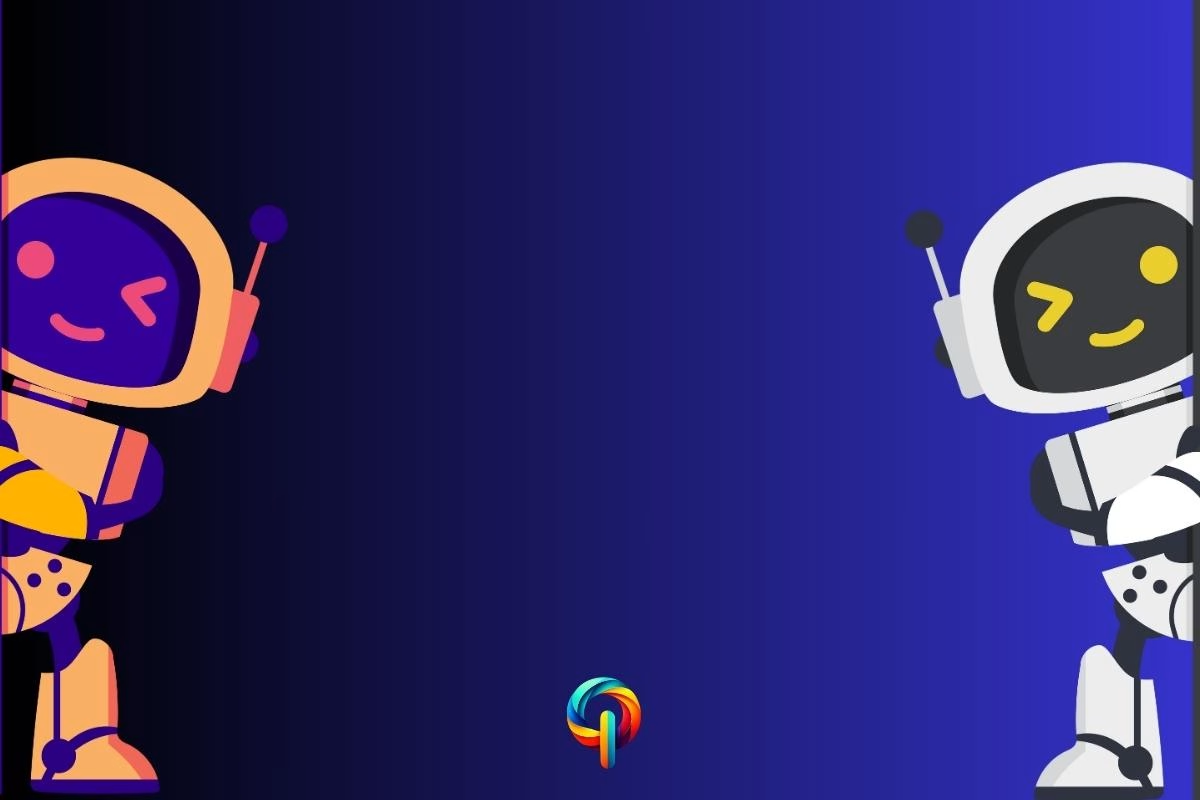
This portion from “AI in Everyday Life: Transforming Our Modern World” gives an engaging overview of how artificial intelligence is deeply woven into modern life. It explores AI’s many applications, from smart home devices and virtual assistants to its influence on online shopping, social media, entertainment, healthcare, education, and transportation. A central theme is AI’s dual nature—it offers incredible perks like better efficiency, personalization, and accuracy, but it also raises ethical concerns like bias, privacy issues, and job displacement. The main goal? To inform readers about AI’s capabilities and challenges, while highlighting the importance of responsible development to unlock its full potential for the good of humanity.
Table of Contents
What Is the History of Artificial Intelligence and Its Evolution?
Artificial intelligence (AI) is reshaping modern life, bringing more convenience, productivity, and connectivity to our everyday routines. This article dives into the concept of AI, explaining how machines can mimic human intelligence through learning, reasoning, and self-correction. But it’s not just about making life easier—AI is a game-changer. It boosts productivity, supports smarter decision-making, and is revolutionizing industries like healthcare and education. Let’s explore how this incredible technology is transforming the way we live and work.
What does AI mean?
Talking about AI or artificial intelligence? It’s not something you can sum up in just a few words. But let’s break it down in a simple way.
The term Artificial Intelligence comes from two words: “artificial”, meaning something that’s not natural or real, and “intelligence”, which is all about the ability to think, learn, and solve problems.
So, AI is all about creating intelligence in machines—intelligence that’s designed to mimic human thinking and decision-making.
In essence, it’s like giving machines the power to think and act in ways that feel human-like. Pretty cool, right? It’s what makes AI capable of solving complex problems, making decisions, and even learning from experience—just like us (well, almost!). 🌟🤖
The Origin of Artificial Intelligence.
Tracing AI Back to Ancient Greece
Did you know the origins of artificial intelligence go way, way back? Like, all the way to Ancient Greece! Yep, those Greek philosophers weren’t just sitting around debating life—they were laying down the groundwork for AI.
Let’s rewind to the Ancient Greek Period (500-323 BC). This was a time when thinkers were diving deep into questions about logic, knowledge, and how things worked at their core. Their ideas were pretty basic compared to modern AI, but trust me, they planted the seeds we still rely on today.
Here are some big names and their contributions:
- Aristotle: The guy behind the concept of syllogism—a form of reasoning that’s still a big deal in AI today.
- Plato: He gave us the idea of forms, which is basically an early way of organizing and representing knowledge—something AI researchers totally nerd out about.
- Democritus: This dude introduced the concept of atoms, inspiring the idea that complex systems can be broken down into smaller, manageable parts—a key to building AI systems.
Sure, the ancient Greek take on AI was super basic compared to what we see now, but their ideas about logic, reasoning, and structure built a foundation we’re still using. Their legacy? It’s like the gift that keeps on giving in the world of AI.
Other Important Periods
AI Through the Ages: From the Middle Ages to Modern Times
Let’s take a fun stroll through history to see how AI evolved over the centuries! 🌟
Middle Ages (500–1500)
Not much action on the AI front here. Still, some Islamic scholars quietly worked on logic and reasoning, keeping the spark alive for future generations.
The Renaissance (1500–1680)
This was science and tech’s big comeback party! While AI research wasn’t the focus, René Descartes’ famous line—“Cogito, ergo sum” (“I think, therefore I exist”)—hinted at the idea of self-awareness, a core concept in modern AI.
Enlightenment Age (1680–1800)
Here’s where logic and reasoning started to shine! Gottfried Leibniz introduced the concept of a symbolic reasoning system called Calculus ratiocinator. Think of it as an early attempt to make machines think in a structured, logical way.
Modern Period (1800–Present)
Then came computers, and boom—the AI explosion! 💥 With advanced technology, researchers began crafting complex, sophisticated AI systems that now impact almost every corner of our lives.
Notable Milestones:
- 1950: Alan Turing’s legendary paper, “Computing Machinery and Intelligence,” brought us the Turing Test—a way to measure if AI could mimic human intelligence convincingly.
- 1956: AI got its name! 🎉 At a Dartmouth College summer workshop, John McCarthy coined the term Artificial Intelligence. This kickstarted efforts to build machines that could think and act like humans.
From modest beginnings to today’s game-changing innovations, AI’s journey is nothing short of remarkable. And guess what? The best is yet to come!
History of AI: 1960s – The Rise of Symbolic AI
1960s: The Rise of Symbolic AI
The ‘60s saw AI stepping up its game with symbolic AI, where knowledge was represented as symbols controlled by rules. Two super cool programs came out during this time:
- General Problem Solver: A groundbreaking program designed to solve general problems (as the name suggests!).
- ELIZA: The OG chatbot that acted like a therapist, chatting with humans using natural language processing.
This was a major leap, laying the groundwork for future AI innovations.
1970s: Slowing Down but Moving Forward
The ‘70s was a bit of a slow ride for AI research. The focus shifted to knowledge representation and reasoning—basically figuring out how to store and use knowledge on computers.
- Researchers explored expert systems and databases to enhance logic-based AI.
- But… progress wasn’t as fast as expected, leading to what some call the “AI Winter,” where interest and funding cooled down.
1980s: The Rise of Computational Intelligence
Here comes the ‘80s with some fresh ideas! 🧠 AI took inspiration from nature and uncertainty, giving us:
- Neural Networks: Modeled after the human brain, these became key for pattern recognition.
- Fuzzy Logic: Perfect for reasoning with uncertain info, widely used in decision-making systems.
- Genetic Algorithms: Inspired by evolution, these helped solve optimization problems.
This era was like a reboot, setting the stage for learning and problem-solving breakthroughs.
1990s: Enter Machine Learning
The ‘90s was when machine learning took the spotlight, allowing AI to learn directly from data. Some cool achievements:
- Spam Filtering: Goodbye annoying emails!
- Web Search: Finding info became faster and smarter.
- OCR (Optical Character Recognition): Scanning printed or handwritten texts into digital formats.
With better algorithms and computational power, machine learning became a game-changer across industries.
2000s: Big Data + Cloud Computing = AI Revolution
AI hit a new stride with the power of big data and cloud computing:
- Big data gave AI vast amounts of info to learn from.
- Cloud computing provided the storage and computational muscle needed for large-scale AI models.
This combo unlocked game-changing applications like self-driving cars, speech translation, and recommendation systems.
2010s: Deep Learning Shines Bright
The 2010s were all about deep learning—AI’s ability to learn from massive datasets using neural networks. Some epic breakthroughs:
- Image Recognition: Think face ID and photo tagging.
- Natural Language Processing (NLP): Enter chatbots, voice assistants, and instant translation tools.
- Self-Driving Cars: AI took the wheel, literally!
Deep learning made AI smarter, faster, and more capable across many fields.
2020s: The Age of Generative AI
Welcome to the present, where AI feels almost magical! ✨ Some jaw-dropping developments:
- Generative AI: Creating art, music, text—you name it!
- Healthcare Marvels: AI-driven diagnostics and vaccine research.
- AI Robotics: Enhancing safety and efficiency in industries and transportation.
AI is now everywhere, solving problems we once thought impossible and opening doors to endless possibilities.
History of AI: 2020 to Now
Artificial Intelligence has taken giant leaps forward in the 2020s, shaping how we work, learn, create, and even survive global challenges. From diagnosing pandemics to generating stunning art, let’s explore year-by-year milestones, their impacts, and how they continue to transform our world.
2020
AI Takes on COVID-19: Diagnostic Tools and Vaccines
The COVID-19 pandemic put AI in the global spotlight. AI-powered tools like BlueDot and Flu Tracker used sophisticated algorithms to detect early patterns of the outbreak. BlueDot notably predicted the coronavirus outbreak in China before traditional health bodies did, proving the immense potential of AI in global health surveillance and preparedness.
On the vaccine front, AI fast-tracked progress. DeepMind’s AlphaFold cracked the complex challenge of protein folding, which is critical for understanding viruses at a molecular level. This breakthrough sped up vaccine development and therapeutic research, offering a glimmer of hope during a global crisis.
GPT-3: A Language Revolution
In 2020, OpenAI introduced GPT-3, a colossal language model with a staggering 175 billion parameters. This was a game-changer for natural language processing (NLP). GPT-3 could write essays, generate code, and create personalized content with uncanny coherence. It demonstrated AI’s growing capability to handle complex linguistic tasks, inspiring innovations across industries.
AlphaFold 2: Advancing Biomedical Research
DeepMind’s AlphaFold 2 solved some of the most puzzling challenges in protein structure prediction. Accurate models of protein folding fueled breakthroughs in biomedical research, helping scientists understand diseases and accelerate drug discovery. AlphaFold showcased AI’s power to tackle real-world problems and advance scientific frontiers.
In a nutshell: 2020 underscored AI’s ability to meet urgent challenges and revolutionize scientific research.
2021
DALL-E: Creativity Redefined
OpenAI’s DALL-E opened the door to AI-driven creativity by generating images from text descriptions. Want a picture of a “cat riding a unicycle under a rainbow”? DALL-E could deliver! This innovation expanded possibilities in art, design, and content creation, blending imagination with technology in a whole new way.
AI in Telemedicine: Bridging Gaps in Healthcare
With the pandemic limiting in-person visits, AI-powered telemedicine became a lifeline. AI enhanced virtual consultations, facilitated remote diagnoses, and improved healthcare accessibility. These tools not only boosted efficiency but also ensured patients received quality care, even from afar.
Meta-Learning and Reinforcement Learning: Smarter AI Models
AI got even smarter with advancements in meta-learning and reinforcement learning. Meta-learning allowed AI to “learn how to learn,” making it adaptable across different tasks. Reinforcement learning let AI improve through trial and error, refining decision-making processes. Together, these techniques made AI models more versatile and capable.
In a nutshell: 2021 was about AI flexing its muscles in creativity, healthcare, and smarter learning systems.
2022
Google BERT: Transforming Language Understanding
BERT (Bidirectional Encoder Representations from Transformers) helped Google take search engines to the next level. Trained on massive datasets, BERT offered nuanced understanding of text, making search results and chat systems smarter. It set a new standard for contextual text comprehension, enhancing everything from search queries to automated responses.
AI in Drug Discovery: Speeding Up Innovation
AI made waves in the pharmaceutical world with companies like BenevolentAI and Insilico Medicine leading the charge. AI algorithms identified promising drug compounds, slashing the time and cost of drug discovery. This marked a major shift, offering quicker paths to life-saving treatments and therapies.
Smart Cities: AI for Better Living
AI helped build smarter cities by improving traffic management and security systems. AI tools predicted traffic patterns, optimized traffic lights, and reduced congestion, making commutes smoother and greener. Meanwhile, AI-powered surveillance enhanced urban safety by identifying threats before they escalated.
In a nutshell: 2022 highlighted AI’s role in refining language understanding, revolutionizing drug discovery, and enhancing urban living.
2023
Chatbots and Virtual Assistants: Smoother Customer Experiences
AI-driven chatbots and virtual assistants took customer service to new heights. These tools efficiently answered FAQs, reduced wait times, and provided personalized recommendations. In marketing, virtual assistants crafted tailored content and targeted ads, helping businesses connect with customers in meaningful ways.
Tesla’s Self-Driving Technology: Smarter Roads Ahead
Tesla improved its Autopilot system with advanced sensors and AI algorithms. These upgrades boosted the safety and reliability of autonomous driving, bringing us closer to a future where cars drive themselves seamlessly and safely.
AI Tackles Climate Change
AI models analyzed vast environmental datasets to forecast weather patterns and climate impacts, aiding disaster preparedness. AI also optimized smart grids and renewable energy forecasting, helping reduce carbon footprints and support sustainability initiatives.
In a nutshell: 2023 demonstrated AI’s growing influence on customer service, autonomous driving, and global sustainability efforts.
2024
Generative AI: Creativity Unleashed
AI models took generative creativity to new heights in image, music, and text generation. These tools revolutionized creative industries, giving artists and creators powerful new ways to bring their visions to life. From stunning artwork to original compositions, AI helped expand the boundaries of human creativity.
AI in Agriculture: Smarter, Healthier Crops
AI transformed farming by enhancing crop yields and disease control. Drones and sensors optimized planting and harvesting, while AI algorithms predicted and prevented crop diseases. These innovations helped farmers grow more food efficiently while protecting their crops from threats.
Personalized Teaching: Learning Tailored to You
Education got a boost with AI-driven tools that adapted content to each student’s learning style. Personalized learning paths improved comprehension and engagement, making education more accessible and effective for learners of all ages.
From 2020 to now,
AI has reshaped industries and everyday life in profound ways. Whether it’s helping us fight pandemics, generate art, drive autonomously, or tackle climate change, AI continues to push boundaries and spark innovation. As we look ahead, one thing is clear: the future of AI holds endless possibilities.
Let’s embrace the journey and see where AI takes us next!
The Benefits of Artificial Intelligence (AI)
Artificial Intelligence (AI) is making our lives easier and transforming industries in amazing ways. It helps us work faster, smarter, and with fewer errors. Unlike humans, AI-powered machines don’t need breaks or rest—they can work tirelessly, which means higher productivity and accuracy.
Let’s dive into some of the key benefits AI brings to the table and how it’s shaping different areas of our world.
Time-Saving: Automation at Lightning Speed
One of the best perks of AI is how much time it saves! Thanks to automation and AI’s super-fast decision-making skills, tasks that used to take hours can now be completed in seconds. For example, the Google search engine uses AI algorithms to analyze mountains of data and give you the information you need in a blink of an eye. That means no more endless scrolling—just the answers you’re looking for, right when you need them!
Quality Control: Fewer Mistakes, Better Results
AI is a champion when it comes to accuracy and quality control. In industries like manufacturing, AI-powered machines make far fewer mistakes compared to humans. They’re also great at analyzing data and delivering precise results, making them perfect for tasks that need attention to detail.
Plus, AI doesn’t get tired! It can work 24/7 without losing focus. Think of Amazon’s Alexa or Google Assistant—they’re always ready to help, no matter the time of day. This continuous efficiency boosts productivity and ensures high-quality results across various sectors.
Customized Service Delivery: Tailored Just for You
AI makes it possible to deliver services that are customized to individual needs. For example, online shopping platforms like Netflix use AI-powered recommendation systems to suggest content you’re likely to love, based on your preferences.
In education, AI creates personalized learning experiences. Platforms like Khan Academy adapt to each student’s learning style, making education more effective and engaging.
Even in healthcare, AI is making a difference. Tools like IBM Watson can predict diseases and help doctors plan treatments, making healthcare more proactive and personalized.
Productivity Growth: Doing More, Faster
AI isn’t just about saving time—it also boosts overall productivity. By handling repetitive or complex tasks quickly and accurately, AI frees up humans to focus on more creative and strategic work.
Take Tesla’s Autopilot system, for example. It uses advanced AI to improve the efficiency and safety of self-driving cars. In creative fields, Generative AI tools like OpenAI’s GPT-3 can create text, images, and music, opening up new possibilities for writers, designers, and artists.
In short, AI helps us get more done, faster, and with fewer headaches!
Human Healthcare: Smarter, Faster Diagnoses
AI is making big waves in healthcare. Systems like IBM Watson help doctors diagnose diseases and plan treatments more accurately and quickly. Imagine a world where detecting illnesses is faster and more precise—that’s the future AI is helping to build.
AI is also improving personalized learning experiences through platforms like Carnegie Learning, which tailors education to each student’s needs. And in the fintech sector, AI is being used for risk assessment and investment decisions, helping businesses succeed.
Everyday Examples of AI in Action
AI isn’t just for big industries—it’s helping out in our daily lives too! Here are some cool examples:
- Healthcare: Google DeepMind uses AI to diagnose blindness through retinal scans and risk analysis.
- Banking: JPMorgan Chase’s LOXM system analyzes trading data to support business decisions.
- Retail: Walmart’s AI suggests products based on your preferences and helps manage inventory efficiently.
- Household: iRobot’s Roomba cleans your home automatically, saving you time and effort.
In a Nutshell
AI is here to make life better, easier, and more efficient. Whether it’s helping us save time, improving the quality of work, or delivering personalized services, AI continues to shape the future in incredible ways. From healthcare and banking to retail and creative industries, the possibilities with AI are endless—and we’re just getting started!
Future Guidance towards Artificial Intelligence – AI
As AI continues to evolve, it’s becoming part of almost every corner of our lives, bringing huge changes and opportunities. To make sure AI helps us in the best and safest way possible, there are a few key areas where we need to focus. Let’s break them down!
1. Guidelines on Ethics and Safety
1.1 Control and Security
First things first—keeping AI under control and making sure it’s secure. AI systems should always have human oversight and safety nets in place to prevent them from going off track or causing harm.
Example: Think of self-driving cars and delivery drones. These technologies are designed with fail-safe mechanisms that let humans step in if something goes wrong. Real-time monitoring and emergency overrides are key to making sure everything stays safe and sound.
1.2 Regulations and Legal Frameworks
AI is developing fast, so we need strong laws to keep up! Regulations help ensure fairness, transparency, and accountability in AI decisions. They also help figure out who’s responsible if something goes wrong.
Example: If a self-driving car causes an accident, clear laws should explain who’s responsible and how victims will be compensated. This kind of legal clarity helps keep things fair for everyone.
1.3 Protection of Privacy
AI is great at analyzing data, but that also raises privacy concerns. We need strict rules to protect personal information and ensure it isn’t misused or leaked. Transparency and user consent are key to building trust.
Example: Platforms like social media and search engines should follow strict data privacy policies. This means personal data should be anonymized and securely stored, and users should know how their data is being used.
2.1 Development of Skills
As AI transforms industries, people need to keep up! Reskilling and upskilling programs are essential to help workers adapt to the AI-driven economy.
Example: Governments and companies can offer courses on AI technologies, coding, and data analysis. This helps workers transition to new roles in AI development, maintenance, and operation.
2.2 Education System Development
AI can also revolutionize how we learn. By integrating AI tools into education, students can enjoy personalized learning experiences that suit their individual needs and pace.
Example: Platforms like Khan Academy and Coursera use AI to deliver customized lessons. This means students worldwide can learn in a way that works best for them, improving understanding and retention.
3.1 Economic Planning
AI could shake up job markets, so smart economic planning is a must. Governments and industries need to balance technological progress with job creation and inclusive growth.
Example: Investing in vulnerable sectors like manufacturing, retail, and logistics can reduce job losses. Creating new roles in areas like AI research, AI ethics, and green tech can also open up exciting opportunities.
3.2 Social Impact Assessment
It’s important to keep an eye on AI’s impact on equality and fairness. Policymakers should analyze how AI affects different social groups and take steps to minimize inequalities.
Example: Governments can launch programs to support people who might be left behind by AI advancements. This could include income support, retraining, and job placement services, especially for underserved communities.
4.1 Research and Innovation
To keep AI growing and improving, we need continuous research and innovation. Both public and private sectors should invest in AI research to unlock new possibilities and tackle current challenges.
Example: In healthcare, AI research can lead to breakthroughs in diagnosis, personalized treatments, and public health management. In agriculture, AI can help boost crop yields, monitor soil health, and reduce waste.
4.2 Ethics in AI Development
As AI’s influence grows, we can’t ignore the ethical side of things. AI should be developed in ways that prioritize human welfare, fairness, and safety. Systems should be transparent, explainable, and unbiased.
Example: Initiatives like “AI for Good” and “Partnership on AI” bring people together to create ethical guidelines for AI. These efforts ensure AI serves the common good and respects human rights.
In a Nutshell
As AI continues to shape our world, we need to guide its development carefully. By focusing on ethics, safety, education, economic planning, and research, we can make sure AI benefits everyone and creates a better, more sustainable future. Let’s work together to make AI something we can all trust and rely on! 😊🚀
More FAQs on Artificial Intelligence (AI)
1. What exactly is Artificial Intelligence (AI)?
AI, or Artificial Intelligence, is all about giving machines the ability to think and make decisions like humans. It’s like teaching computers to solve problems, learn from experience, and even mimic how we think. Whether it’s recognizing faces, chatting with us in apps, or driving cars, AI tries to replicate human intelligence in ways that make our lives easier and more efficient.
2. Where did the idea of AI come from?
The idea of AI isn’t as modern as you might think—it goes way back to Ancient Greece! Philosophers like Aristotle, Plato, and Democritus were already exploring concepts of logic, reasoning, and knowledge. These early thinkers laid the groundwork for what we now call AI. Their ideas evolved over centuries, and with the growth of technology, the dream of creating thinking machines started to become a reality.
3. When did the term “Artificial Intelligence” get its name?
The term “Artificial Intelligence” officially came to life in 1956 during a summer workshop at Dartmouth College. It was John McCarthy, one of the pioneers in the field, who coined the name. That event marked the starting point of organized efforts to figure out how to build machines that could think, learn, and solve problems just like humans.
4. What was “Symbolic AI” and when did it emerge?
Symbolic AI made its mark in the 1960s, and it was all about representing knowledge using symbols and rules to control them. This method aimed to create machines that could “reason” their way through problems, kind of like solving a puzzle. Early programs like the General Problem Solver and ELIZA (which was one of the first chatbots) were developed during this time. While it was a groundbreaking idea, it had its limits, as real-life problems were often too complex for simple rule-based systems.
5. What is the “Turing Test”?
The Turing Test is like a challenge for AI to prove how smart it really is. Introduced in 1950 by the legendary Alan Turing, this test checks if a machine can mimic human intelligence so well that you can’t tell whether you’re talking to a human or a computer. If the machine can fool you, it’s passed the test! While not perfect, the Turing Test is still a fascinating way to measure how close AI comes to behaving like us.
6. How has AI evolved in recent years?
AI has grown leaps and bounds in the last few years. For instance, in 2020, AI was a game-changer in tracking the spread of COVID-19 and speeding up vaccine development. Tools like GPT-3 showed just how advanced AI-powered language models could get, while others like DALL-E blew people away by creating stunning images from simple text prompts. These breakthroughs have extended into areas like telemedicine, drug discovery, and even building smarter cities. AI is no longer just a futuristic idea; it’s woven into our everyday lives.
7. What are some of the main benefits of AI?
AI brings a ton of advantages to the table. It can automate repetitive tasks, saving time and boosting productivity, while also improving the quality of products and services. In industries like healthcare, AI helps with quicker and more accurate diagnoses, making treatment faster and more effective. Plus, it personalizes experiences—whether it’s recommending your next favorite Netflix series or curating online shopping lists tailored just for you.
8. How is AI being used in our daily lives?
AI is quietly (or not-so-quietly) everywhere in our daily routines. In healthcare, it’s diagnosing illnesses and even helping doctors predict health issues early. In banking, AI analyzes trading data and detects fraud. Retail stores use it to suggest what you might want to buy next, while household gadgets like robotic vacuums use AI to keep your home tidy. Even when you type something into a search engine and get instant results, that’s AI at work. It’s like a behind-the-scenes genius making everything smoother and smarter.
9. What are some ethical considerations related to AI development?
As exciting as AI is, it comes with its own set of ethical dilemmas. For starters, there’s the question of data privacy—how do we ensure that all the information AI gathers isn’t misused? Then there’s the issue of safety and control. What happens if an AI system makes a mistake or goes rogue? There’s also the risk of inequality, where only certain people or countries benefit from AI advancements. To address these challenges, we need strong regulations, human oversight, and fair access to these technologies.
10. What is the future of AI?
The future of AI is full of possibilities, but it’s also a journey we need to tread carefully. As research continues, AI is set to revolutionize industries, create smarter systems, and improve our quality of life. However, this progress needs to be paired with ethical guidelines, safety measures, and widespread education to make sure the benefits reach everyone. From reshaping how we work to enhancing healthcare and beyond, the future of AI looks promising—but it’s up to us to steer it in the right direction.
Last but not least
Artificial Intelligence has brought incredible benefits and some serious challenges to our lives. When used properly, AI can improve healthcare, boost productivity, and make education more effective and accessible. But if it’s misused or not properly controlled, it can lead to dangerous situations—like security risks, privacy violations, and job loss.
To make the most of AI while avoiding its pitfalls, we need to take some essential steps. These include making sure AI systems are safe and under control, setting clear ethical and legal standards, and protecting personal privacy. We also need to focus on training programs and AI-driven learning platforms to help people develop new skills for the future.
On top of that, smart policies and forward-thinking planning are key to AI’s development. We should carefully evaluate the economic and social impacts of AI to ensure fairness and equality. And let’s not forget ongoing research into ethical AI and innovation—this will help us make sure AI stays safe, reliable, and beneficial for everyone.
In the end, AI has the potential to be an amazing blessing for humanity if we use it wisely. But if we lose control or misuse it, it could turn into a curse. That’s why it’s super important to create the right policies, rules, and safety measures. This way, we can enjoy all the fantastic benefits of AI while steering clear of its potential downsides.
Let’s work together to make sure AI helps us build a better, brighter future!




